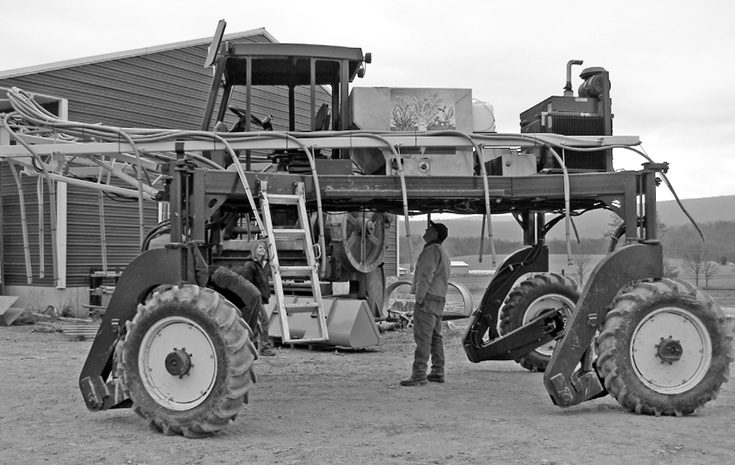No-Till Farmer
Get full access NOW to the most comprehensive, powerful and easy-to-use online resource for no-tillage practices. Just one good idea will pay for your subscription hundreds of times over.

Cover crops' specialist David Wilson minces no words when he describes the potential impact of the high boy that Loysville, Pa., no-tiller Charles Martin made in 2009 to seed cover crops into standing corn and soybeans.
“It’s a game changer,” says Wilson, an agronomist with King’s AgriSeeds in Ronks, Pa.
“The timing of seeding cover crops with the high boy is what really makes cover crops work successfully.”
No-tillers who wait to seed cover crops until after they chop corn for silage or harvest it for grain are fighting a losing battle with the clock, he says.
“We run out of adequate temperatures to get the cover crop established in the field,” Wilson says.
“Most of the legumes have hard seed coats and they take a little longer to germinate than the grasses, perhaps a week to 10 days longer.”
A head start means cover crops can accumulate more biomass in the spring, says Scott Flanders, ag conservation specialist with the Perry County Conservation District, who is a no-tilller, too.
“That head start helps moisture management during the cash-crop growing season and allows legumes to accumulate more nitrogen,” says Flanders.
Martin says he wanted a better way to seed cover crops on his hilly ground in Perry County. Flying cover crops onto the small fields surrounded by woods and houses in his area does not work well.
Martin no-tills corn and barley, feeds beef cattle and operates a machinery fabrication shop.
His idea for the high boy…